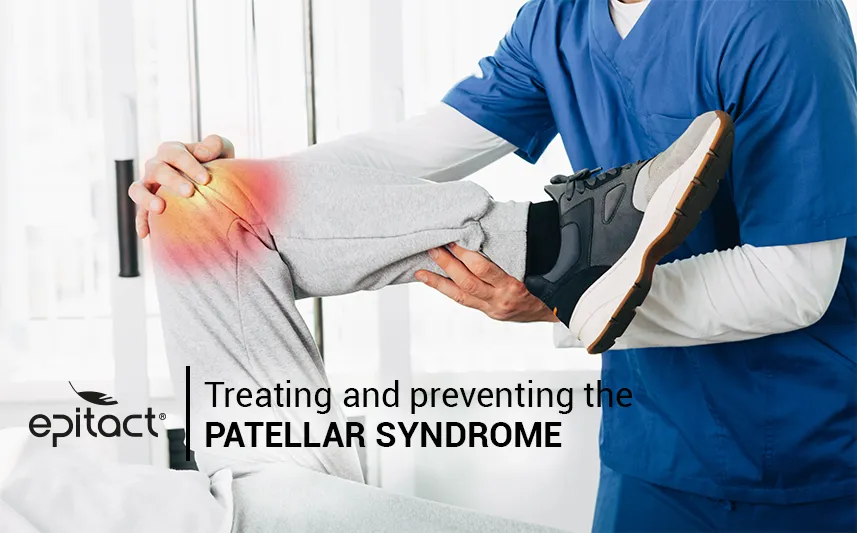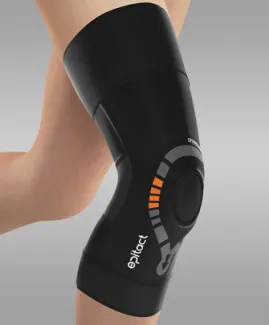
Patellofemoral pain syndrome (PFPS) or runner’s knee is an inflammation of the knee joint related to wear and tear of the kneecap cartilage. With its impaired function and repeated movements, the kneecap has difficulties sliding against the thigh bone. The resulting rubbing causes irritation, itself leading to pain inside the knee.
Understanding the condition and its predisposing factors will help find the right treatment for patellofemoral pain syndrome, very frequent in sportspersons. If you play sports and have patellofemoral pain syndrome, find out the 4 best treatments for runner’s knee with EPITACT®!
Patellofemoral pain syndrome: exercises with a physical therapist
Consulting a physical therapist makes it possible to plan a customised rehabilitation programme for the treatment of your runner’s knee. Indeed, one of the reasons for the appearance of patellofemoral pain syndrome is a muscle imbalance. This imbalance reduces the capacity of keeping the kneecap in its right position. Physical therapy aims to reinforce the stabilising muscles around your kneecap to avoid this from happening.
Those exercises reduce the pain in front of the knee and then help to treat patellofemoral pain syndrome. The rehabilitation programmes usually include strengthening exercises. Patellofemoral pain syndrome often occurs because of an imbalance between the muscles in front of the thigh (the quadriceps) and behind (the hamstrings).
In addition, you can do rehabilitation exercises at home, even if they do not replace those with a physical therapist. However, they are particularly effective to preserve the positive effects of the exercises with a specialist. They also play a part in the treatment of runner’s knee and showed positive and lasting outcomes on both muscle and joint function. You can ask your physical therapist for advice about the number and frequency of those exercises for patellofemoral pain syndrome at home.
Wear orthopaedic insoles – Consult your podiatrist
Wearing orthopaedic insoles for the treatment of patellofemoral pain syndrome helps to correct flat feet and feet in pronation, which are often a cause of PFPS. Insoles can also help to compensate for an imbalance in the pelvis region (leg shorter than another), which can contribute to the appearance of the syndrome.
Patellofemoral pain syndrome: treatments with medications – Consult your GP
If you suffer unbearable pain, see your GP who can prescribe anti-inflammatory medicines. So this treatment for patellofemoral pain syndrome will reduce inflammatory pains.
Use a patellofemoral pain syndrome brace – Consult your GP
A knee support brace* can be a great solution to prevent unpredictable dislocation of the kneecap. Used as a preventive measure or to resume sports activities, it eases knee pain and secures the joint. It is important to choose a thin and light brace that does not hinder your movements when practising sports. Otherwise it could weaken the stabilising muscles around your kneecap and you’ll be in a vicious circle!
Here are 4 treatments for runner’s knee. Use them according to the cause of your condition. Nevertheless, if you want to prevent the pain or the appearance of this syndrome, it is possible to play the prevention card!
*This solution is a class I medical device that bears the CE marking under this regulation. Carefully read the instructions before use. Manufacturer: Millet Innovation. 08/2020
 Pharmacie
Pharmacie